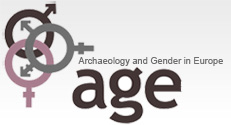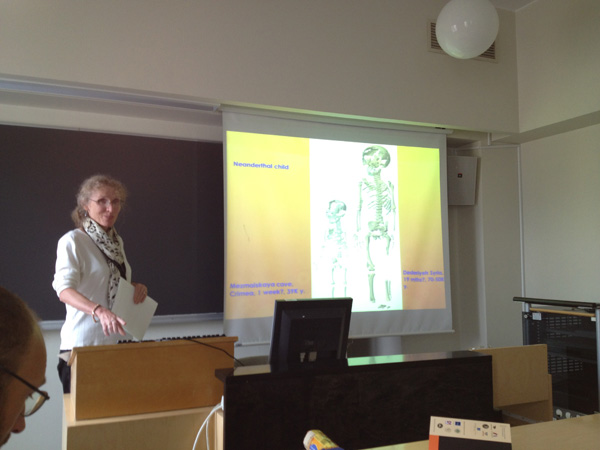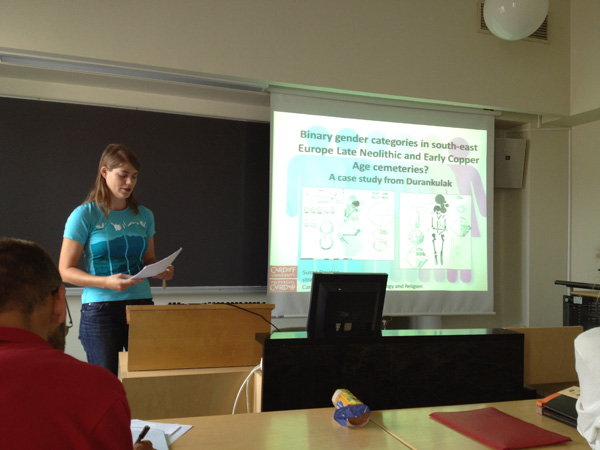Session organized by AGE in the EAA 18th Annual Meeting
Boundary Crossings and Gendered Bodies: The Limits of the Body - Gender Trouble at the Margins and in the Center
Silvia Tomáková and Bo Jensen members of the EAA working party on Gender and Archaeology in Europe (AGE) organized a session titled Boundary Crossings and Gendered Bodies: The Limits of the Body - Gender Trouble at the Margins and in the Center

In that session we discussed what are the natural and cultural boundaries of a body and how does gender cross the biological/cultural divide to form the situated experience of personhood? How does bodily mobility across boundaries affect gendered experience? How do we recognize such a processes in the archaeological record? We look at the material expression of "biographies of the body" through the lens of gender. Papers presented address normative and non-normative gender formations in past societies as reflected on the physical body, contributing to the nature/culture hybrid, and/or as reflected in physical space.
We were particularly interested in contributions that discuss cases in which generally accepted "boundaries", either bodily or spatial, are obscured, altered, or transgressed. Topics included bioarchaeology and skeletal studies, decorated bodies - adornments, tattoos, physical modifications - disabled or differently abled bodies, representations of bodies, materializations of bodies as idealized or as normative, and technologies of the body. Diet, labor, and health were also interesting "traditional" topics to view through this prism. Likewise, we welcomed papers dealing with the gendered ordering of movement, space and place, in ritual, architecture, and economy. For this session, we encouraged researchers who work on gender to focus on boundaries and boundary-crossings, and those who work on boundaries to focus on gender.
Paper presented were:
Introduction (Silvia Tomáková and Bo Jensen)
Embodied Difference: Limits of the Neandertal body Silvia Tomáková (University of North Carolina at Chapel Hill, USA)

Binary Gender Categories in South-east European Late Neolithic and Early Copper Age Cemeteries Real or Modern Bias? A Case Study from Durankulak Susan Stratton (Cardiff University, United Kingdom)

Body, Death and Social Identity in Argar Culture, Eva Alarcón García and Margarita Sánchez Romero (University of Granada, Spain)
Bodies in a Ditch: Anatomy of Burials on Iron Age Sites Jo Zalea Matias (Durham University, United Kingdom)

Shared Spaces and Invisible Boundaries: Gendered Places in the Archaeological Record Margarita Sánchez Romero (Universidad de Granada, Spain)

Discussion
Coffee Break
Sight and Vision. Variations in visual abilities in Scandinavian Iron Age Elisabeth Arwill-Nordbladh (University of Gothenburg, Sweden)

Unheimliche Bodies. Between Man and Unman, Human and Animal, Home and Away in the Viking Age Bo Jensen (Denmark)

Man with a Mirror? Gender Trouble in Pompeian Domestic Artefact Assemblages Ria Berg (Institutum Romanum Finlandiae, Finland)
Discussion

